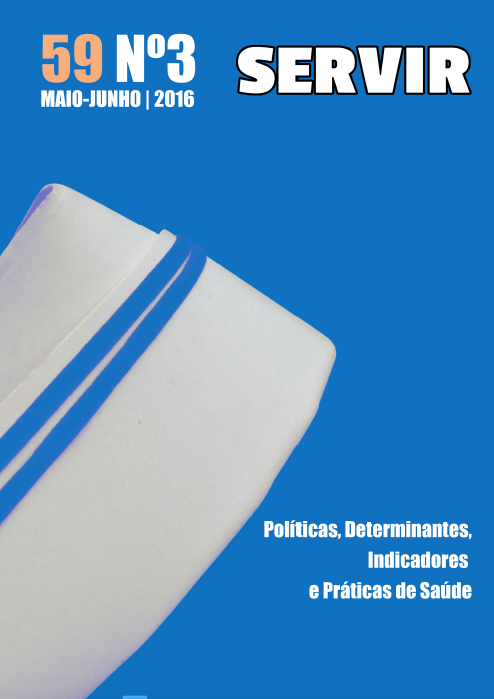Qualidade de vida dos ostomizados
perfil psicológico
DOI:
https://doi.org/10.48492/servir023.24010Palavras-chave:
Ostomizados, Qualidade de Vida, Autoconceito, AutoestimaResumo
INTRODUÇÃO
A ostomia é uma abertura criada cirurgicamente para conectar um órgão interno à superfície do corpo, podendo ser temporária e definitiva. Com a construção do estoma surgem várias mudanças ao nível social, familiar e, principalmente psicológico influenciando a qualidade de vida dos Ostomizados. Deste modo revelou-se pertinente a realização de um estudo que estudasse esta problemática.
OBJETIVO
Avaliar a Qualidade de Vida (QdV) das pessoas com ostomia;
Averiguar a influência das variáveis psicológicas (autoconceito e autoestima) na QdV.
MÉTODOS
É um estudo quantitativo, descritivo-analítico, com corte transversal. A recolha de dados foi realizada numa amostra constituída por 104 ostomizados, dos quais 55,77% do sexo masculino e 44,23%, do sexo feminino, com idades compreendidas entre os 24 e os 91 anos, sendo a média de 64 anos.
RESULTADOS
No que respeita às variáveis psicológicas, constatamos que quanto melhor o autoconceito (r=0,667; p=0,000) e a autoestima global (r=0,656; p=0,000) melhor é QdV.
Inferimos ainda que as variáveis psicológicas autoconceito e autoestima são preditoras da QdV, explicando respetivamente 44,60%, 43,10% da sua variabilidade.
CONCLUSÕES
Face aos resultados inferimos ser necessário estar atento às necessidades da pessoa ostomizada, bem como ao seu perfil psicológico afim e planear intervenções de saúde que minimizem o efeito da presença da ostomia na QdV do seu portador.
Downloads
Referências
Bróis, P. & Martins A. (2007, Fevereiro). O papel do enfermeiro na promoção da qualidade de vida da pessoa colostomizada. Nursing. 218 (16-20).
Cainé, J. (2008, Janeiro). Viver com uma ostomia: o processo de integração da nova condição de saúde. Enfermagem Oncológica. 41, (8-10).
Cunha-Nunes, M.M.J. (2004). Qualidade de Vida e Diabetes: Variáveis Psicossociais. Tesis Doctoral, apresentada à Universidad de Extremadura em 2004.
Lyon, C. & Smith A. (2001). Abdominal Stomas And Their Skin Disorders. United Kingdom: Martin Dunitz Ltd.
Moser, A., Guerber, C., Faszank, F., Leonardi, A., Cardoso, M. (2002). Desenvolvimento de habilidades sociais em idosos residentes em um asilo na Cidade da Lapa - Pr. In 4º Congresso Nacional de Psicologia da Saúde. “A saúde numa perspetiva de ciclo de vida”. Lisboa 2-5 Outubro (175-182).
Pais-Ribeiro, J.L. (1994). Psicologia da saúde, saúde e doença. In Psicologia da saúde: áreas de intervenção e perspectivas futuras. Braga: Associação de Psicólogos Portugueses, p. 33-55
Vickery, C., Gontkovsky, S. & Caroselli, J. (2005, Agosto). Self-concept and quality of life following aquired brain injury: A pilot investigation. Brain Injury. 9 (19), 657-665.
WHOQOL Group (1995). The World Health Organization Quality of Life Assessment (WHOQOL): Position paper from the World Health Organization. Social Science e Medicine, 41 (10), 1403- 1409.
Downloads
Publicado
Como Citar
Edição
Secção
Licença
No intuito de promover a livre circulação do conhecimento, a Servir funciona em regime de acesso livre (open access). Todo o seu conteúdo está disponível e protegido sob a licença Creative Commons (CC BY 4.0).
A revista permite o auto-arquivo em repositórios institucionais de todas as versões, podendo ficar imediatamente disponíveis.


